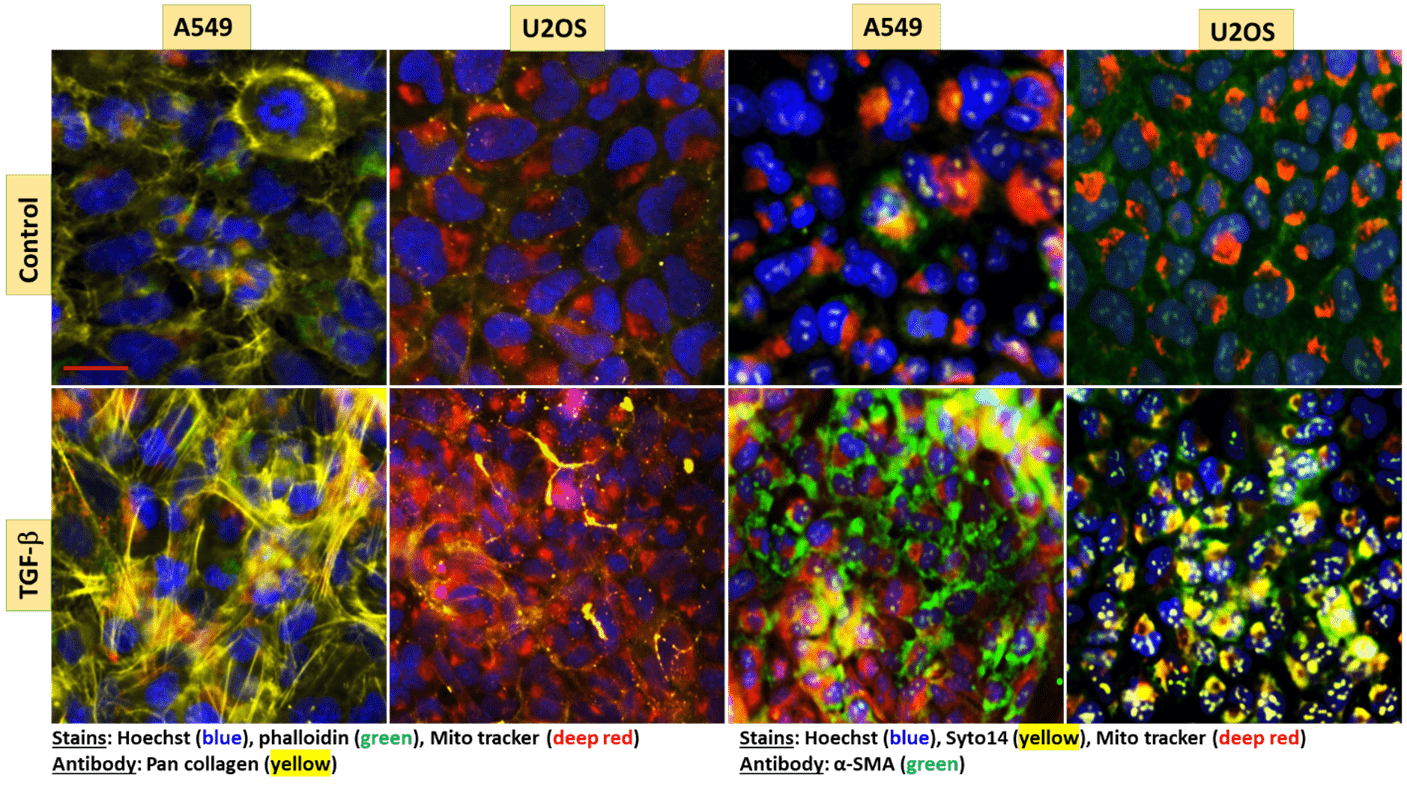The cell painting assay is a high-content image-based method for morphological profiling using fluorescent dyes. These dyes reveal relevant cellular components that can be used to simultaneously investigate numerous biological pathways upon a given perturbation. The resulting images can be analyzed using different image analysis techniques to provide phenotypic profiles of individual cells, as well as serve as input for machine or deep learning approaches. This method has been successfully used to study compound toxicity, predict biomarkers, detect morphological disease signatures, and give insights into the mechanism of action of both existing and novel compounds in the field of pharmacology and toxicology. Immunofluorescence based drug screening methods depend on the use of specific antibodies for the visualization and quantification of drug-affected cells.
Visikol has combined cell painting with antibody-based detection of fibrotic proteins in a single assay. This experiment makes use of a modified cell painting protocol by incorporating antibody labelling, which can be used for the unbiased morphological profiling of drug effect on cells. This method can identify anti-fibrotic compounds, as well as novel drugs, demonstrating its suitability to be implemented as a strategy for either drug repurposing or drug discovery.

A549 (A549 – CCL-185 | ATCC) and U2OS (U-2 OS – HTB-96 | ATCC) cells were treated with control (0.5% DMSO) and TGFβ beta (5 ng/ml) (tgf-β1 – Transforming Growth Factor-β1 (HEK293 Derived) | PeproTech) for 72h. Then cells were stained with Hoechst (stains nucleus), SYTO14 (stains nucleoli and cytoplasmic RNA), Phalloidin (stains actin cytoskeleton), Mito Tracker Red (stains mitochondria) (Thermo Fisher Scientific – US). We also used antibodies as markers of fibrosis: α-SMA (Anti-alpha smooth muscle Actin antibody [1A4] KO Tested (ab7817) | Abcam) and pan collagen (dataSheetPdf (thermofisher.com)). We used Molecular Devices ImageXpress high content confocal imager to visualize our samples after labeling different cellular compartments and biomarkers. The images were taken at 20x.
If you are interested in utilizing this cell painting in combination with antibody labeling approach for your drug discovery projects, please reach out to our team to discuss your project. We are always interested to work together with our clients to develop customized drug discovery solutions to answer your research questions. Based on requirements, we can design custom image analysis pipeline for segmentation and classification of biomarkers of interest.
References:
1) Bray et al., et al. Cell Painting, a high-content image-based assay for morphological profiling using multiplexed fluorescent dyes. Nat Protoc. 2016;11:1757–74.
2) Caicedo , et al. Data analysis strategies for image-based cell profiling. Nat Methods. 2017;14:849–63
3) Axel Pahl and Sonja Sievers. The Cell Painting Assay as a Screening Tool for the Discovery of Bioactivities in New Chemical Matter. Methods Mol Biol . 2019;1888:115-126.
